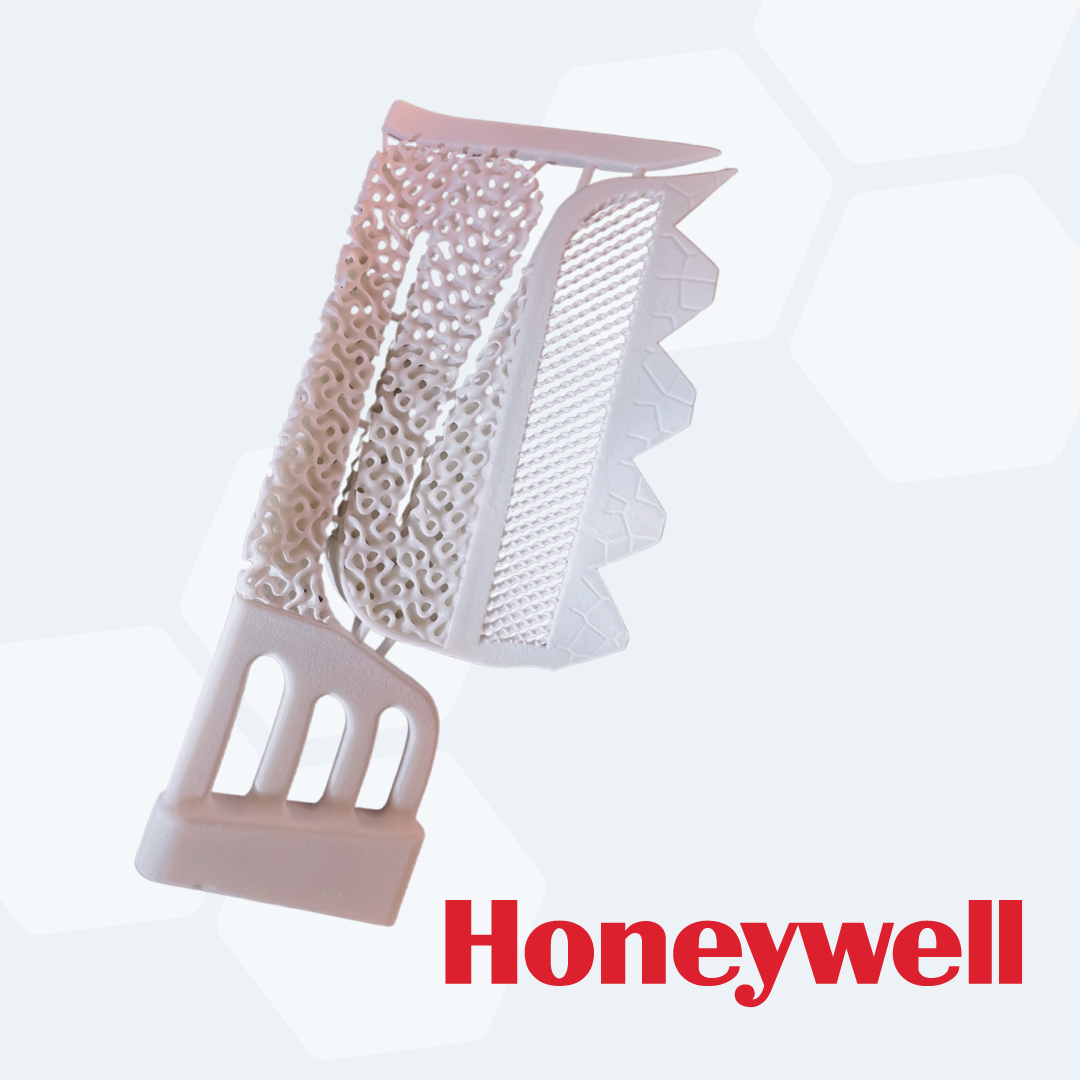Additive manufacturing is helping Honeywell trim many months off the development timeline for a next-generation family of turbofan engines that will help define the future of flight. The company is thought to be one of the first jet engine manufacturers to use ceramic 3D printed molds to make turbine blades.
“Turbine blades are made through an investment casting process that only a few foundries in the world can handle,” said Honeywell Chief Manufacturing Engineer Brian Baughman. “It involves machining extremely complex metal dies and tooling to create ceramic molds, which are then cast with a molten superalloy to form the blades.”
Instead, Honeywell is now using groundbreaking vat-based high-resolution 3D printing technology to process ceramic slurry and print the molds directly. Using a state-of-the-art printer developed by 3D industrial printing pioneer Prodways Group, Honeywell has dramatically reduced the time and cost of producing the first-stage high pressure turbine blades needed to develop the new engine family.
“With the conventional investment casting process, it can take 1-2 years to produce the turbine blades needed for the development process,” said Mike Baldwin, Principal R&D Scientist. “Additive manufacturing lets us take the design, print the mold, cast it, test it and get real numbers to validate our models – and the whole process takes just 7-8 weeks. If we need to tweak the design, we can change it electronically and get another blade in about six weeks.”




